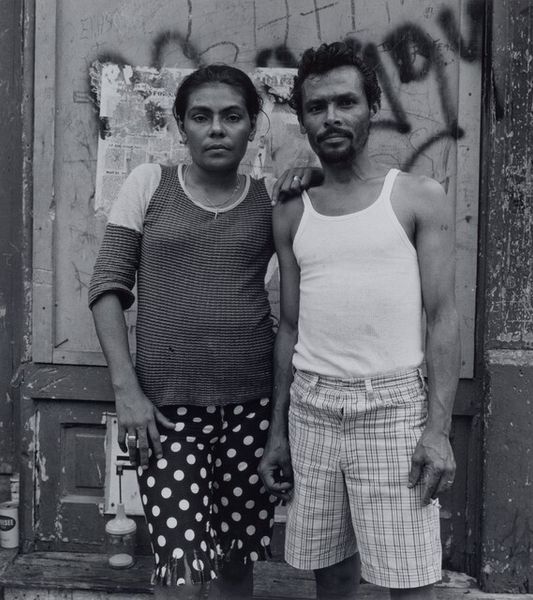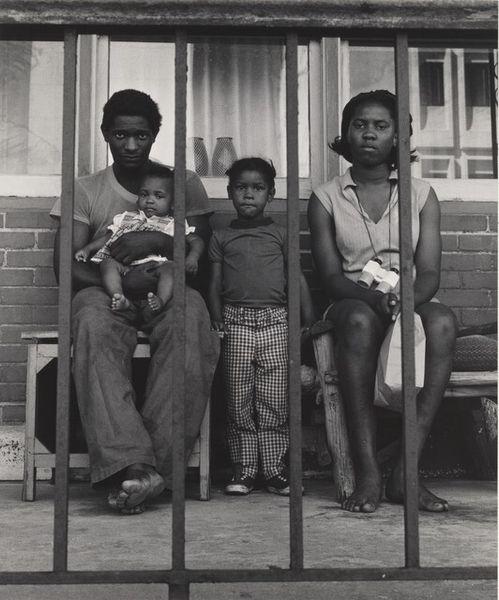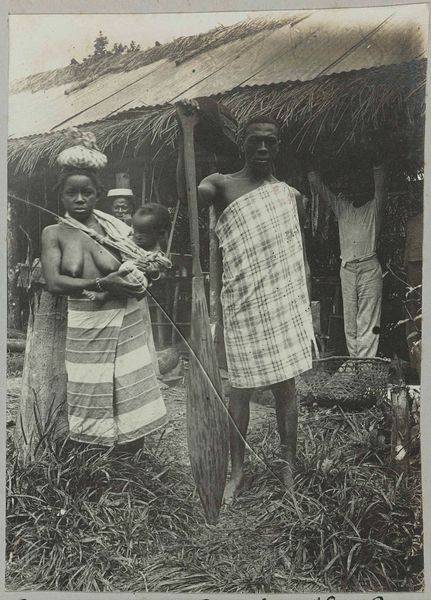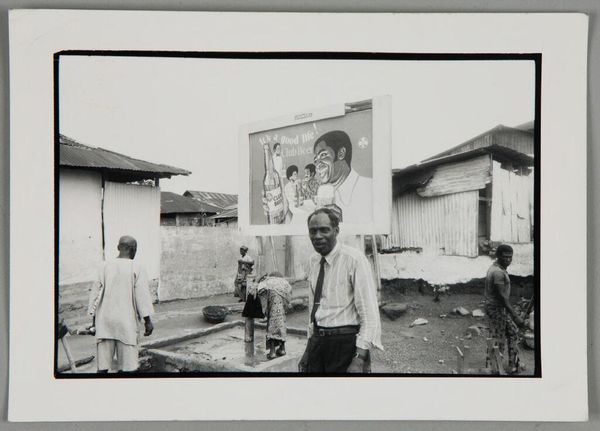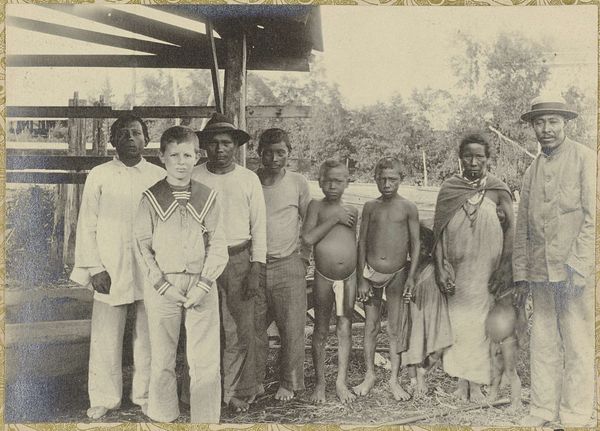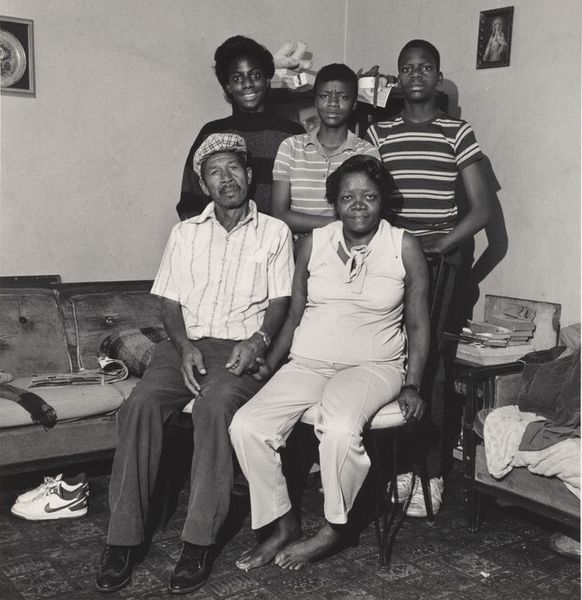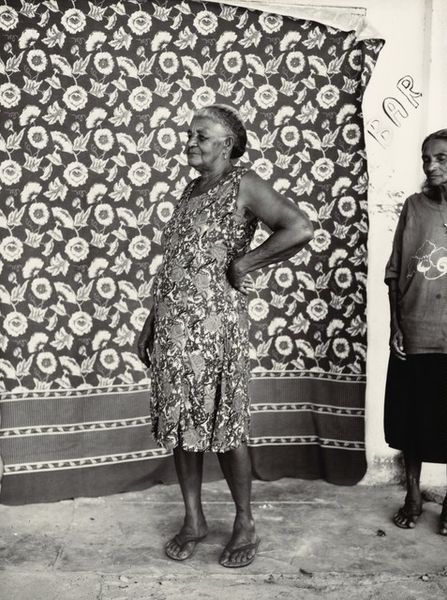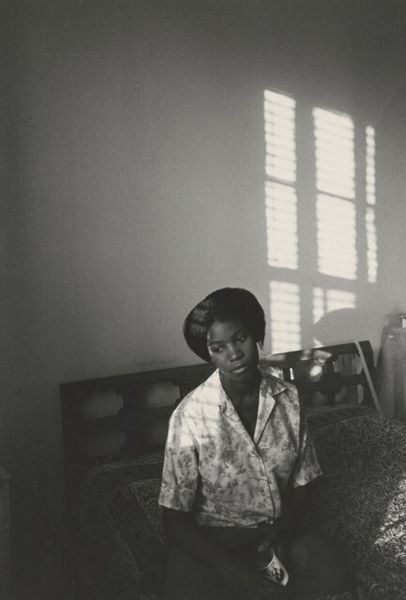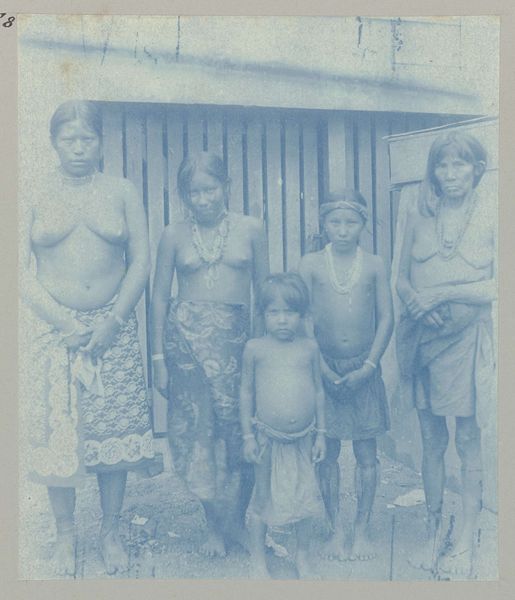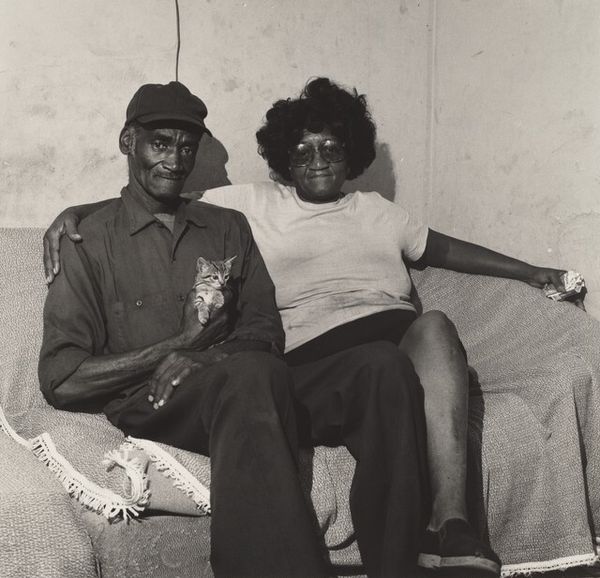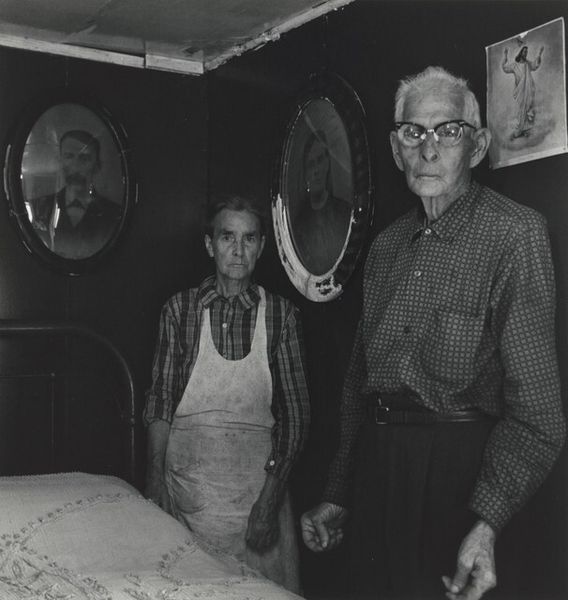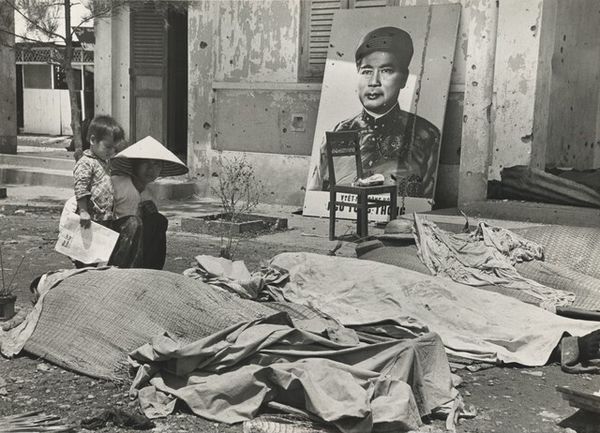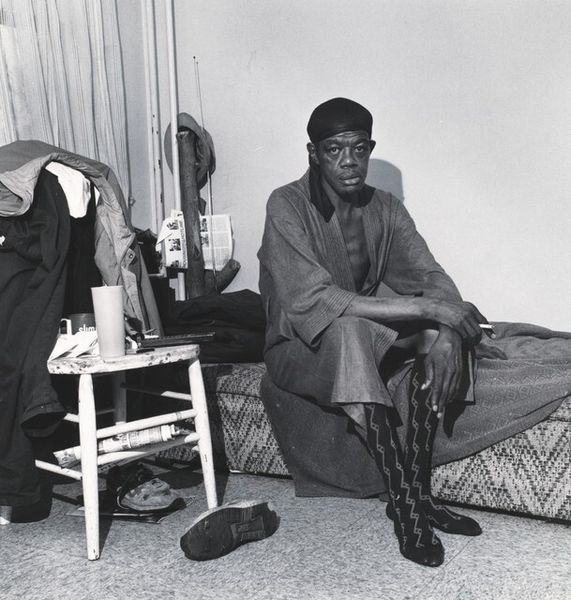
photography, gelatin-silver-print
#
portrait
#
african-art
#
social-realism
#
street-photography
#
photography
#
group-portraits
#
black and white
#
gelatin-silver-print
#
street photography
#
realism
Dimensions: image: 17.5 x 16.4 cm (6 7/8 x 6 7/16 in.) sheet: 25.2 x 20.3 cm (9 15/16 x 8 in.)
Copyright: National Gallery of Art: CC0 1.0
Curator: Here we have Milton Rogovin’s gelatin silver print, "Zimbabwe (Family of Miners series)" from 1989. What are your first thoughts? Editor: Stark. A quiet dignity emanates from this image of a couple standing close together. The grainy texture contributes to a feeling of lived experience. There’s something very raw about it. Curator: Rogovin was deeply committed to documenting the lives of working-class families. The image needs to be understood in light of colonial and post-colonial Zimbabwe, a history defined by exploitative mining practices that profoundly affected the workers’ lives. Editor: Absolutely. The woman, dressed modestly in a light colored dress, and the man, in what appears to be work clothes, could be seen to represent a generational challenge against racial capitalism. Consider the wall behind them plastered with news and magazine clippings which signal not just aspirations but a world far removed. Curator: Rogovin often photographed people in their homes or neighborhoods, framing them as subjects rather than objects. Here, that strategy presents the politics of representation head-on, particularly through its deliberate framing of the couple. I wonder how that approach may confront preconceived notions, especially with the family's connections to extractive industries. Editor: I agree. The photograph becomes a statement. They stand united and their quiet gazes challenge the viewer. Their hands, clasped together, become symbolic, hinting at the resilience required to navigate socio-political structures during the era it was created. Curator: It’s fascinating to consider the impact that the location of where and when these photographs are exhibited can shape audience perception, shifting understandings over time. Editor: Looking at the socio-historical perspective coupled with its striking visuals, this photograph transcends documentation to stand as a testament of strength, and of family, amidst very challenging circumstances.
Comments
No comments
Be the first to comment and join the conversation on the ultimate creative platform.
